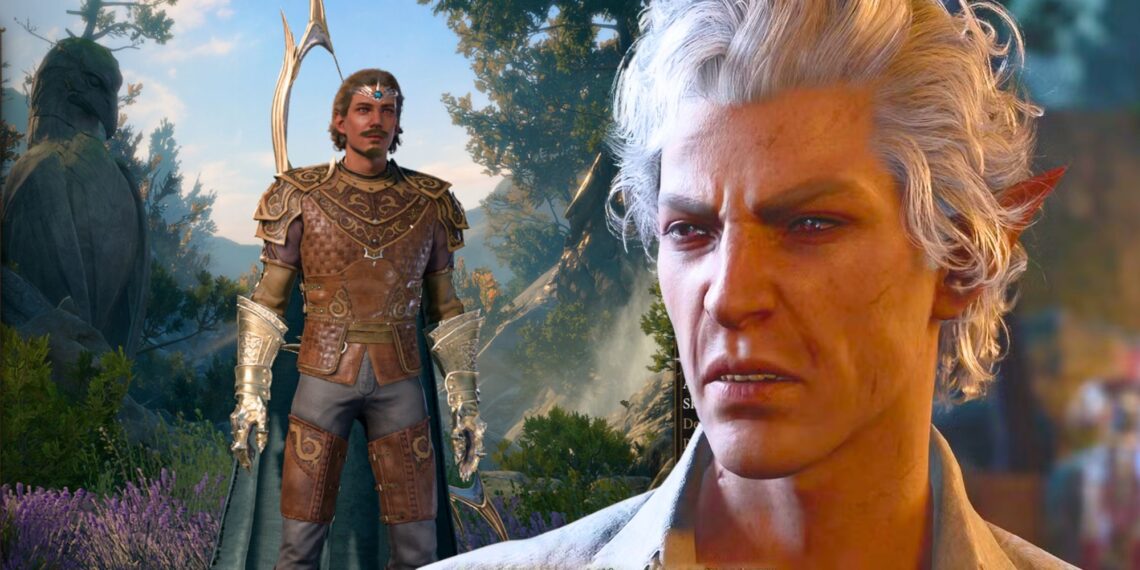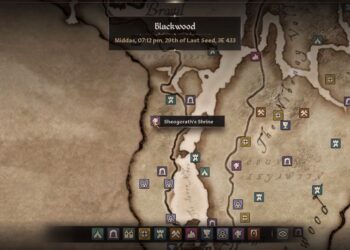Baldur’s Gate 3 has finally rolled out its last major update, Patch 8, which brings an impressive addition of 12 new subclasses. One of the most anticipated is the Swarmkeeper ranger, a choice that promises to inject some humor into your gameplay with the ability to summon swarms of bees to wreak havoc on your foes. It’s especially entertaining in the late game when you’re pitting your swarm against formidable level 20 enemies. Typically, the ranger class doesn’t attract as much attention from BG3 fans, making it an opportune moment to try your hand at it if you haven’t before.
Rangers unlock their subclass at level three, so you’ll need to level up a bit before you can wield any of the fresh new spells. However, if you’re itching to dive straight into the action with the Swarmkeeper, you can easily do so by loading an old level twelve save file and reclassifying your character. The new update seamlessly integrates with earlier campaigns, allowing you to take on the Absolute with a buzzing army of bees, swarming moths, or even cloud-like jellyfish. Here are some tips to consider for character creation.
Swarmkeeper Ranger Subclass in BG3 Explained
The standout feature of the Swarmkeeper Ranger is its capability to summon various creature swarms. In Baldur’s Gate 3, rangers can call upon three types of swarms: the Legion of Bees, Cloud of Jellyfish, and Flurry of Moths. Each swarm has unique abilities and offers the fundamental capability to teleport you up to 17 feet away. While you can summon only one swarm type at a time, you can switch between them as you level up. Once you hit Level 11, swarm attacks will deal a d8 instead of the usual d6, and teleporting will boost your armor class by 2.
| Swarm | Attack Option | Support Option | Level 11 Support Bonus |
|---|---|---|---|
| Cloud of Jellyfish | 1d6 Extra Lightning Damage | Shock target on a failed constitution saving throw | Disarms the target |
| Legion of Bees | 1d6 Extra Piercing Damage | Push target back 17ft on a failed strength saving throw | Knocks the target prone |
| Flurry of Moths | 1d6 Extra Psychic Damage | Blind target on a failed constitution saving throw | Slows the target |
When engaging with your swarm, you can choose one of three actions: deal damage, teleport yourself, or activate one of the swarm’s special support abilities. All swarms inflict the same damage but boast different utility options. At Level 7, you’ll gain three "Writhing Currents" after a long rest, allowing you to utilize "Writhing Tide." This will elevate you into the air for ten turns while granting immunity to surface effects, and you’ll receive an additional Writhing Current at Level 9.
Swarmkeepers also acquire the "Prey’s Scent" passive ability, which allows your swarm to inflict an extra d6 damage against any target marked with Hunter’s Mark. This extra damage remains at a d6, regardless of level progression. Additionally, Swarmkeepers can access spells like Mage Hand and Faerie Fire consistently. Upon reaching level 5, you will get the Web spell which not only slows or immobilizes enemies but also negates fall damage if executed from a height. At level 9, you’ll unlock Gaseous Form, enabling you to evade attacks and squeeze into tight spots.
Best Build for Swarmkeeper Ranger in Baldur’s Gate 3
Prioritize Dexterity and Boost Wisdom
As a ranger, you’ll have the opportunity to select favored enemies at levels 1, 6, and 10. Among the five options, it’s advisable to focus on Bounty Hunter, Keeper of the Veil, and Ranger Knight. The Mage Breaker option, which grants True Strike, is notoriously tricky to utilize effectively, while the Sanctified Stalker grants Sacred Flame, which isn’t particularly beneficial.
| Favored Enemy | Bonus |
|---|---|
| Bounty Hunter | – Opponents hit by ensnaring strike receive disadvantage on their saving throw – Investigation Proficiency |
| Keeper of the Veil | – Offers protection from Evil and Good – Arcana Proficiency |
| Ranger Knight | – Heavy Armor Proficiency – History Proficiency |
While there’s no drastic difference among the swarm types, in the early game, the Flurry of Moths tends to be the most advantageous. Psychic resistance is less prevalent when compared to lightning and piercing, and the blinding factor helps impede enemy attacks and secure an edge over ranged magic users. The githyanki race boasts unique gear that enhances psychic damage and offers plenty of movement opportunities, making it a strong candidate for an optimized Swarmkeeper.
With a good build, higher wisdom levels will improve your spellcasting ability, but it’s advisable to prioritize dexterity because it directly affects your attack strength and armor class. Here’s a list of suggested feats, equipment, and permanent bonuses to enhance your game.
| Feats | Equipment | Permanent Bonuses |
|---|---|---|
| – Athlete (+1) | – Nimblefinger Gloves (+2 for Gnomes, +1 for Dwarves and Halflings) | – Auntie Ethel’s Hair (+1) |
| – Lightly Armored (+1) | – The Graceful Cloth (+2) | – Mirror of Loss (+2) |
| – Moderately Armored (+1) | ||
| – Resilient: Dexterity (+1) | ||
| – Weapon Master (+1) | ||
| – Ability Improvement (+1-2) |
Several additional feats can support the Swarmkeeper without enhancing dexterity, such as Alert, Sharpshooter, and Crossbow Expert. Notably, a gnome equipped with Nimblefinger Gloves, ideal initial stats, and supplementary bonuses will yield the most powerful dexterity-centric attacks. While rangers don’t receive wisdom saving throw proficiency, they do gain proficiency with both dexterity and strength. A solid recommendation is to acquire the Helmet of Autonomy, located on a skeleton at the entrance of the Festering Cove, the home of the Kuo-Toa in BG3, as it is the only item that grants wisdom proficiency.
Recommended Starting Stats
- Strength: 8
- Dexterity: 17
- Constitution: 14
- Wisdom: 16
- Intelligence: 8
- Charisma: 10
Considering that the druid class shares wisdom as a spell modifier, it’s a sensible option for multiclassing as it harmonizes well thematically. Meanwhile, the cleric’s Tempest Domain pairs effectively with the Cloud of Jellyfish, providing bonuses like Destructive Wrath and Thunderbolt Strike when dealing lightning or thunder damage. Although it might not be the most dominant choice statistically, the Swarmkeeper quickly became one of my favorite subclasses in Baldur’s Gate 3 due to its entertaining playstyle.





